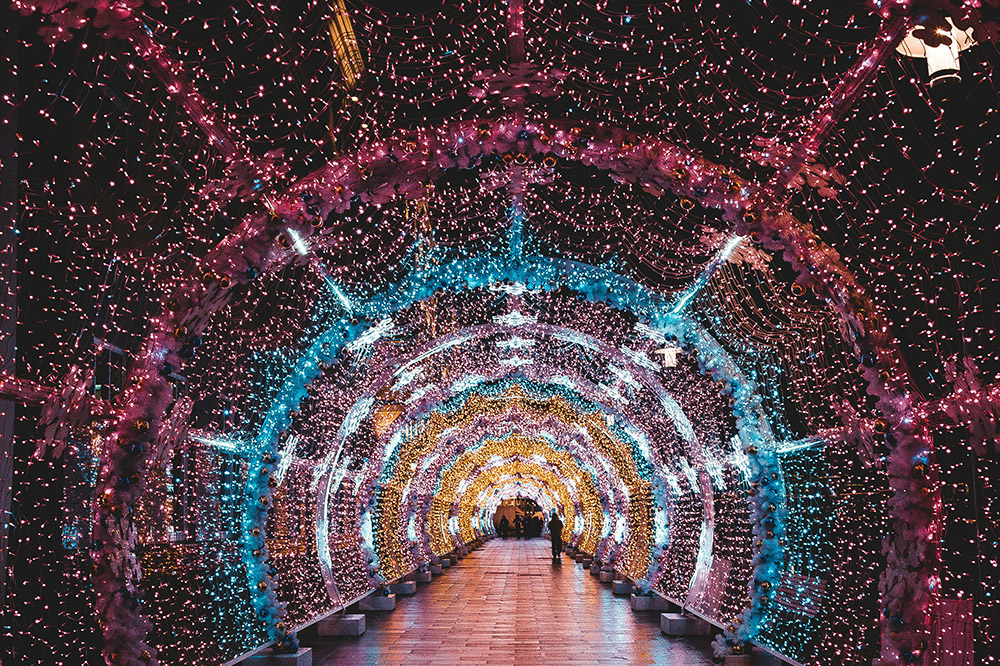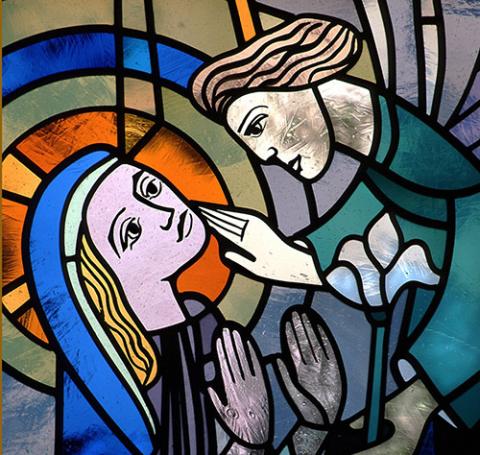
(Unsplash/Eric Rai)
Visiting a renowned public garden when the annual Christmas light display was in full swing, a dear friend accompanying me said, "I don't suppose we'll see a reference to Jesus."
As the sun set and darkness fell, at almost 8 p.m., the gardens, resplendent in daylight, came alive. Oversized beribboned Christmas gifts, the Mad Hatter's tea party, Santa Down Under led by six white boomers (acceptable again post-Rolf Harris?), elsewhere another sleigh led by the obligatory reindeer, a sound and light version of "The Twelve Days of Christmas," a carousel and a Ferris wheel, both operating, Cinderella's glass slipper magnified many times, Santa's train and Santa's plane, and so on.
All was magical, delightful, enchanting. Nothing not to enjoy.
The soundtrack was enjoyable but decidedly secular — no surprises there.
It's been the case for some time that almost anything can be Christmas-ified: Disney characters, jungle animals as well as local flora and fauna, European-style villages, literary classics, Aussie beach or bush scenes, and more. It's all commercial gold, of course — I know people who visit the garden annually — and I guess, in a somewhat lame defense, it does introduce a little magic into the busyness and worry of life in the First World.
Advertisement
But then, hark, we turned a corner and heard a sonorous voice narrating a tale that was not from the Brothers Grimm or the happiest place on earth, or even classic literature, but from the gospel of Luke.
"They were in Bethlehem when the time came for her to have her child, and she gave birth to a son, her firstborn. She wrapped him in swaddling cloths and laid him in the manger, because there was no place for them in the inn" (Lk 2:6-7).
Behold, a larger-than-life-size nativity scene appeared, and as each character was named, the figure was lit gloriously from within. The angel Gabriel was perched in a tree, and his moment was suitably illuminated each time the story was told, on a loop of course.
As we enjoyed the familiar-but-always-new tale, full of sound and fury, signifying everything, we heard a small voice behind us: "Mummy, there's a fairy in the tree!"
Gabriel may have been suitably mortified — fair enough — but really, who could blame the little girl? She's been brought up in a world where fairy gardens and fairy dresses, fairy cakes and fairytales (although generally far more sanitized than the Grimm tales) are ubiquitous and not to be questioned.
So why wouldn't a character in a white dress in a tree at Christmas time be a fairy? What else could it be?
When my parents' generation was growing up, treats and celebrations were few and far between. Christmas was eagerly anticipated, yet by today's standards, it was a low-key affair.

In this church window depicting the Annunciation, the angel Gabriel appears before Mary to proclaim that she is to be the mother of Jesus. The window is from St. Mary's Church in Willmar, Minn. (CNS/Crosiers)
Culturally, Christmas in the southern hemisphere struggles to match the impact of a northern Christmas simply because of the surfeit of light we experience. We are not awaiting the coming of the light; we are bathed in light. And in states where daylight saving reigns, we have even more light! I know — not really — but it feels like it. If you take a drive to see Griswald-type homes, you have to wait until it's actually dark to appreciate their splendor. Similarly, Christmas light extravaganzas such as that described above don't begin until 7 p.m. or later.
All the moving pictures and musical delights of these entertainments are gorgeously enticing, but I found myself drawn to the simpler (relatively speaking) offerings. There is something about a purer light that beckons you. For example, an avenue of shimmering globes — or were they hot air balloons? — compelled me to walk that way. I've seen images of other light shows — for that's really what they are — that create a tunnel effect through which visitors walk. It's a mini pilgrimage of sorts, bringing people together in a spirit of goodwill.
Even though the intention is largely, if not entirely commercial, I believe that in a secular society, these experiences (admittedly not within everyone's reach) can offer to the discerning eye glimpses of the story that we all celebrate at this time of year.
The journey, the bringing of gifts, the path lit by a star, the long-awaited baby, the new parents far from home and the familiar, the strangers who insinuate themselves into the tale — all these are classic elements of archetypal stories — but the story is our story.
Indulge in these annual events, if you can, by all means, but why not take the time to draw together the threads and set them against the larger story from which we all arise? If you have children, don't shortchange them, and don't assume they know the story. A nativity — suddenly fashionable — will help, remembering that children will want to engage with and rearrange the characters. Talk about them by name — after all, they belong to the family!
There is little to be gained by disdaining the fairytale aspects of the season; perhaps as a society we get what we deserve? But there is opportunity aplenty in the creative ways in which our contemporary world retells the stories and celebrates them. Be part of it.








